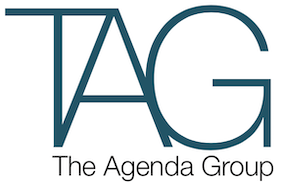The Australian Government on 12 March released its long awaited formal report into the Review of the Interactive Gambling Act 2012.
The report recommends that there be development of a nationally consistent set of harm minimisation and consumer protection guidelines before proceeding with any expansion of legalised online gambling opportunities.
The idea is sound, sensible and practical. But all it is really saying is that the States and Territories got it right with their nationally consistent model for interactive gambling regulation in the 1990s and the Commonwealth, with its ban in 2001, unfortunately did not.
The AUSModel for interactive gambling was developed by the States and Territories in the late 1990s and subsequently enacted into law around the nation.
In Victoria, the relevant law was the Interactive Gaming (Player Protection) Act 1999 although today that same legislation has lost its identity having been subsumed into the omnibus Gambling Regulation Act 2003. The old title gives a hint to the main focus of the law and therefore the AUSModel.
The reason why very few people have ever heard of the AUSModel for interactive gambling is because enactment of the Federal Government’s Interactive Gambling Act 2001 (IGA) superseded and effectively over-rode it.
And now we have the Federal Government expressing concern that the current model – its model – is allowing Australians to lose an estimated $1 billion per annum on overseas sites which may or may not be regulated and consequently, may or may not be safe for gamblers to use.
We know the AUSModel works. Not because of any Australian experience, but because it has been successfully adopted in European jurisdictions with effective online gambling regulatory regimes.
In this instance, ‘effective’ means that the licensed operators have proper harm minimisation requirements which are appropriately enforced. Jurisdictions such as Great Britain, Alderney and others have been steadily growing this industry to meet consumer demand in ways that deliver the product responsibly and with game integrity.
Nevertheless, I believe the findings of the Review are appropriate, albeit about 12 years too late. But my support comes with one proviso relating to the mixed statements in the media which on the one hand refer to “uniform harm minimisation and consumer protection guidelines” and on the other “a national standard on harm minimisation and consumer protection”.
I would support the latter but recommend against the former. Why? Because uniformity has two significant problems which don’t exist compared with a national standard.
Uniformity – should it ever be achieved – would likely require consensus from nine separate jurisdictions (assuming Norfolk Island, which has an online gambling regulatory regime, is included). Experience shows that reaching agreement is unlikely to be as easy as it might otherwise seem. And this leads directly to the first problem.
Once uniformity is achieved, it will be almost impossible to get any further changes made, simply because it will be too difficult to do. This is a problem which exists with all uniform agreements, but is likely to be even more problematic for this industry which, like all online businesses, goes through substantial change at a higher rate than most others.
The second significant problem is that uniformity stifles innovation. Just as the gambling industry is innovative, so too are State and Territory governments, with the way they approach responsible gambling.
A lack of freedom to develop new ideas – which will happen with a uniform approach – will result in a reduction in new, better responsible gambling and harm minimisation opportunities.
It is desirable, therefore, to develop a national standard which, in effect, becomes the template for the minimum level of harm minimisation and consumer protection. Under this approach, there is nothing to prevent a State or Territory from developing new ideas to combat gambling problems, as long as they maintain an agreed minimum standard.
The Review identifies four different approaches to achieve nationally consistent harm minimisation across the State and Territories, and in my view recommends the best of the four:
“the development of a national standard, applicable to all Australian licensed interactive gambling providers, that establishes the framework for a minimum set of harm minimisation and consumer protection measures for all types of interactive gambling that are permitted by the IGA. The standard should be developed by a joint working party of Commonwealth, state/territory, industry, gambling researchers and responsible gambling bodies under the auspices of the COAG Select Council on Gambling Reform… The minimum standard should be incorporated into state/territory legislation. States/territories should continue to be responsible for enforcement of harm minimisation and consumer protection as they are now.”
The most important issue of all is to protect Australians from gambling sites which do not provide appropriate levels of harm minimisation.
Online gambling opponents might decide it’s time to re-state the pithy line they have previously used that online gambling allows a player to lose their house without ever leaving home. The current model – the so-called ban implied by the Interactive Gambling Act – allows that to happen now.
Moving toward a better regulated system, such as the AUSModel, along with a national standard for online gambling harm minimisation will do more to protect these at risk gamblers than any unenforced and unenforceable ban will ever do.
